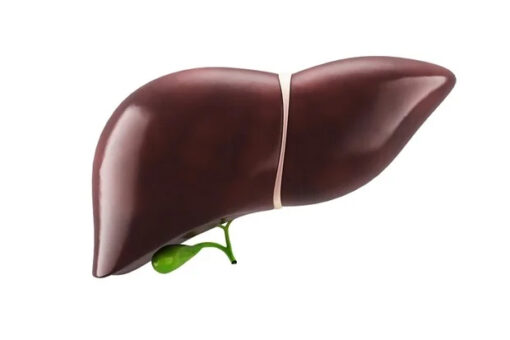A study by researchers at Stanford Medicine describes a new type of depression: categorized as the cognitive biotype: which is poorly treated by commonly prescribed antidepressants and accounts for 27% of depressed patients.
Mental assignments showed that these patients experience issues with the capacity to prepare, show poise, support center regardless of interruptions and smother unseemly way of behaving; Two areas of the brain that are responsible for those tasks were seen to be less active in the images.
Antidepressants that target serotonin (selective serotonin reuptake inhibitors, or SSRIs) are frequently prescribed to patients with depression because the condition has traditionally been categorized as a mood disorder. However, SSRIs are less effective for patients with cognitive dysfunction. According to the researchers, addressing these cognitive dysfunctions with less common antidepressants or other treatments may help restore social and occupational abilities as well as alleviate symptoms.
According to senior author Leanne Williams, PhD, the Vincent V.C. Woo Professor and professor of psychiatry and behavioral sciences, the study, which was published on June 15 in JAMA Network Open, is part of a larger effort by neuroscientists to find treatments that target depression biotypes.
Finding the biotype In the study, one of three commonly prescribed typical antidepressants was randomly given to 1,008 adults with previously untreated major depressive disorder: escitalopram (brand name Lexapro), sertraline (Zoloft), and venlafaxine-XR (Effexor), both of which affect serotonin and norepinephrine, respectively. The eight-week program was completed by 712 of the participants.
Two surveys were used to evaluate the participants’ depressive symptoms before and after receiving antidepressant treatment: one that was administered by a clinician, and the other was a self-assessment that included questions about changes in eating and sleeping patterns. In addition, quality of life and social and occupational functioning were tracked.
Before and after treatment, the participants also completed a series of cognitive tests that, among other things, measured verbal memory, working memory, decision speed, and sustained attention.
The “GoNoGo” task, which requires participants to press a button as quickly as possible when they see “Go” in green and not press when they see “NoGo” in red, was scanned by scientists using functional magnetic resonance imaging prior to treatment. By measuring changes in blood oxygen levels, the fMRI tracked neuronal activity and revealed levels of activity in various brain regions corresponding to Go or NoGo responses. The images of the participants were then compared to those of people who didn’t have depression.
In addition to impaired cognitive function on behavioral tests and reduced activity in certain frontal brain regions, the researchers discovered that 27% of participants had more prominent symptoms of cognitive slowing and insomnia; they called a profile the cognitive biotype.
Lead author Laura Hack, MD, PhD, an assistant professor of psychiatry and behavioral sciences, stated, “This study is crucial because psychiatrists have few measurement tools for depression to help make treatment decisions.” Most of it is self-reporting and making observations. Imaging while at the same time performing mental assignments is fairly clever in melancholy treatment studies.”
During the GoNoGo task, pre-treatment fMRI revealed that participants with the cognitive biotype had significantly lower activity levels in the dorsolateral prefrontal cortex and dorsal anterior cingulate regions than participants without the cognitive biotype. The cognitive control circuit, which is made up of the two areas, is in charge of limiting thoughts and responses that aren’t needed or relevant and improving goal selection, among other things.
The researchers found that the overall remission rates for the three antidepressants given were as follows after treatment: the absence of general symptoms of depression -; were 47.7% for those without the biotype and 38.8% for those with the newly discovered biotype. Sertraline had the highest disparity, with remission rates of 35.9% and 50% for those with the biotype and 50% for those without.
“Depression manifests in a variety of ways in various individuals, but identifying similarities -; like brain function profiles that are similar -; “helps medical professionals treat participants effectively by providing individual care,” Williams stated.
Williams and Hack suggest that behavior measurement and imaging could assist in the diagnosis of depression biotypes and lead to improved treatment because depression is not a one-size-fits-all condition. A patient may complete a survey on their own computer or in the doctor’s office. If it is determined that the patient possesses a particular biotype, the patient may be referred to imaging for confirmation prior to treatment.
Specialists at the Stanford Community for Accuracy Psychological well-being and Health, which Williams coordinates, in association with the Stanford Translational Accuracy Psychological wellness Facility, which Hack coordinates, are concentrating on another drug – ; – guanfacine that, with assistance from the Stanford University Innovative Medicines Accelerator, specifically targets the region of the dorsolateral prefrontal cortex. They believe that patients with the cognitive subtype might benefit more from this treatment.
Williams and Hack hope to compare various medications with treatments like cognitive behavioral therapy and transcranial magnetic stimulation in studies with cognitive biotype participants. In transcranial magnetic stimulation, also known as TMS, nerve cells are stimulated by magnetic fields. In cognitive behavioral therapy, patients learn how to deal with negative thoughts by using problem-solving techniques. These thoughts can cause emotional dysregulation as well as a loss of social and occupational abilities.
“When people are going through our trial-and-error process,” Hack stated, “I frequently witness the suffering, the loss of hope, and the increase in suicidality that occurs.” And this is because, despite the fact that depression affects a wide range of people, we begin with medications that work in the same way for everyone. This study may be able to alter that, in my opinion.”
The Sierra-Pacific Mental Illness Research, Education, and Clinical Center’s researchers; the Palo Alto Health Care System of Veterans Affairs; Westmead Institute for Medical Research’s Brain Dynamic Centre; and Westmead campus of the University of Sydney contributed to the work.
Brain Resource Company Operations Pty Ltd. and Stanford University’s Clinical and Translation Science Award Program, which is managed by the National Center for Advancing Translational Sciences at the National Institutes of Health, provided funding for the study (grant UL1TR003142-01).




